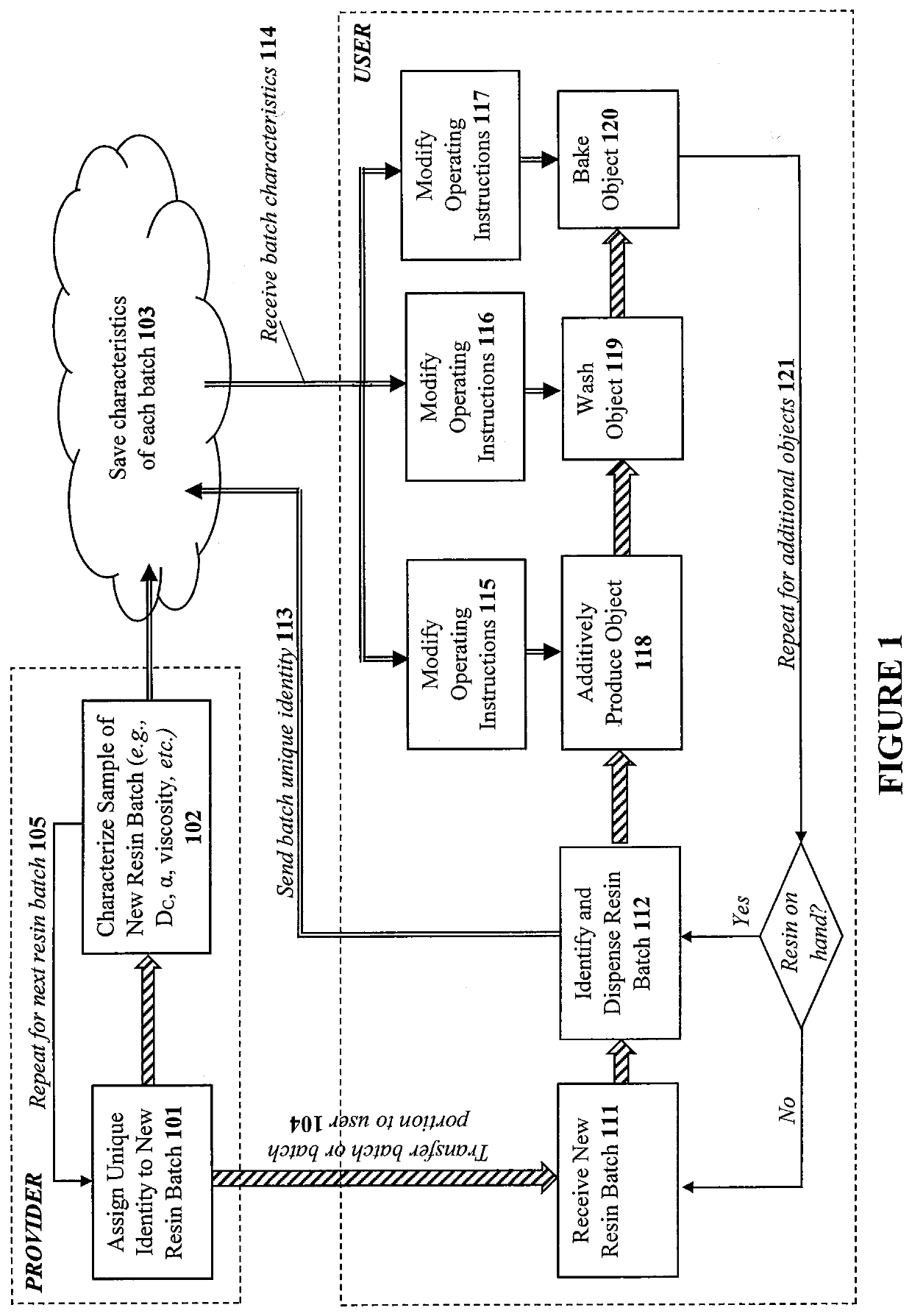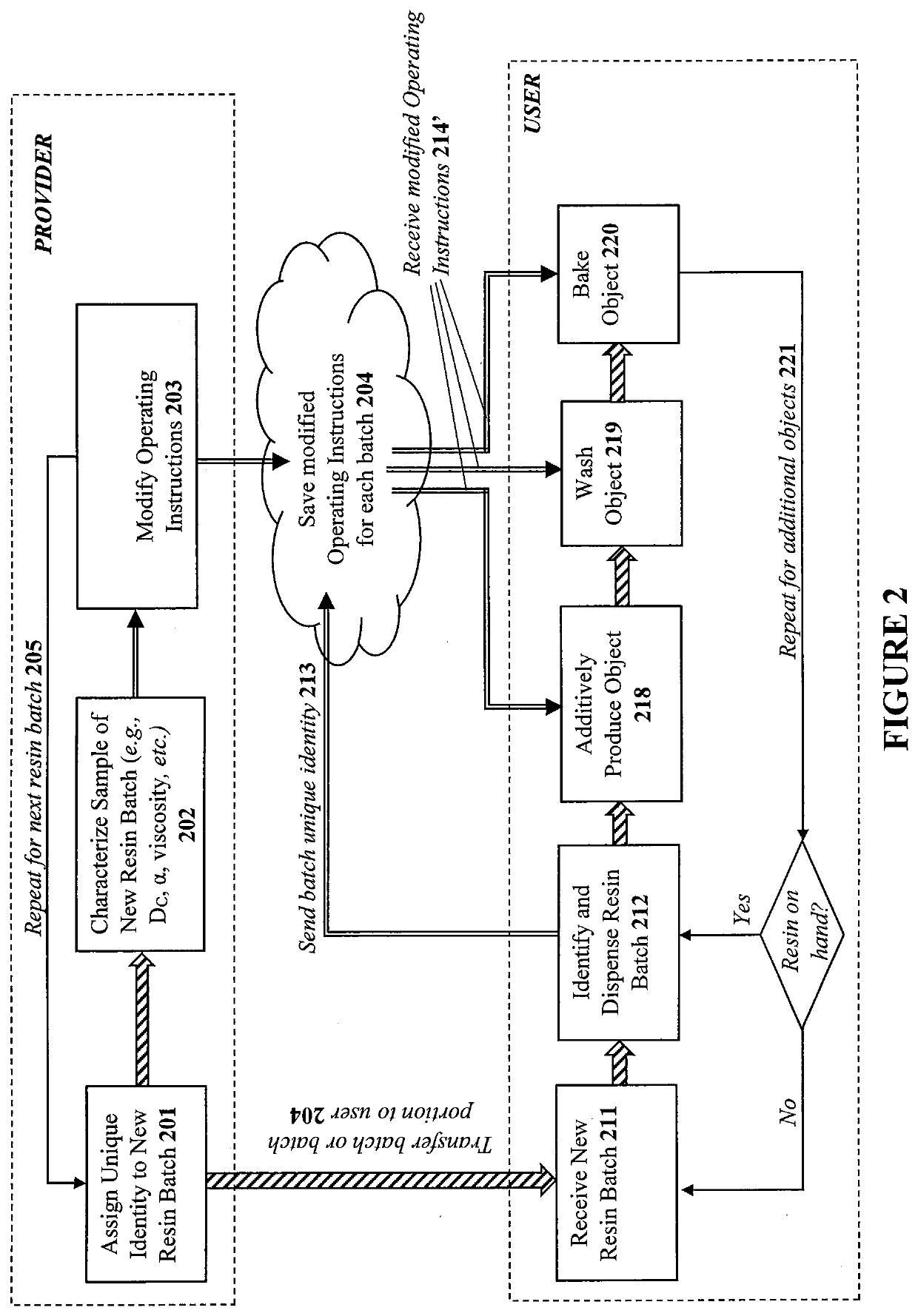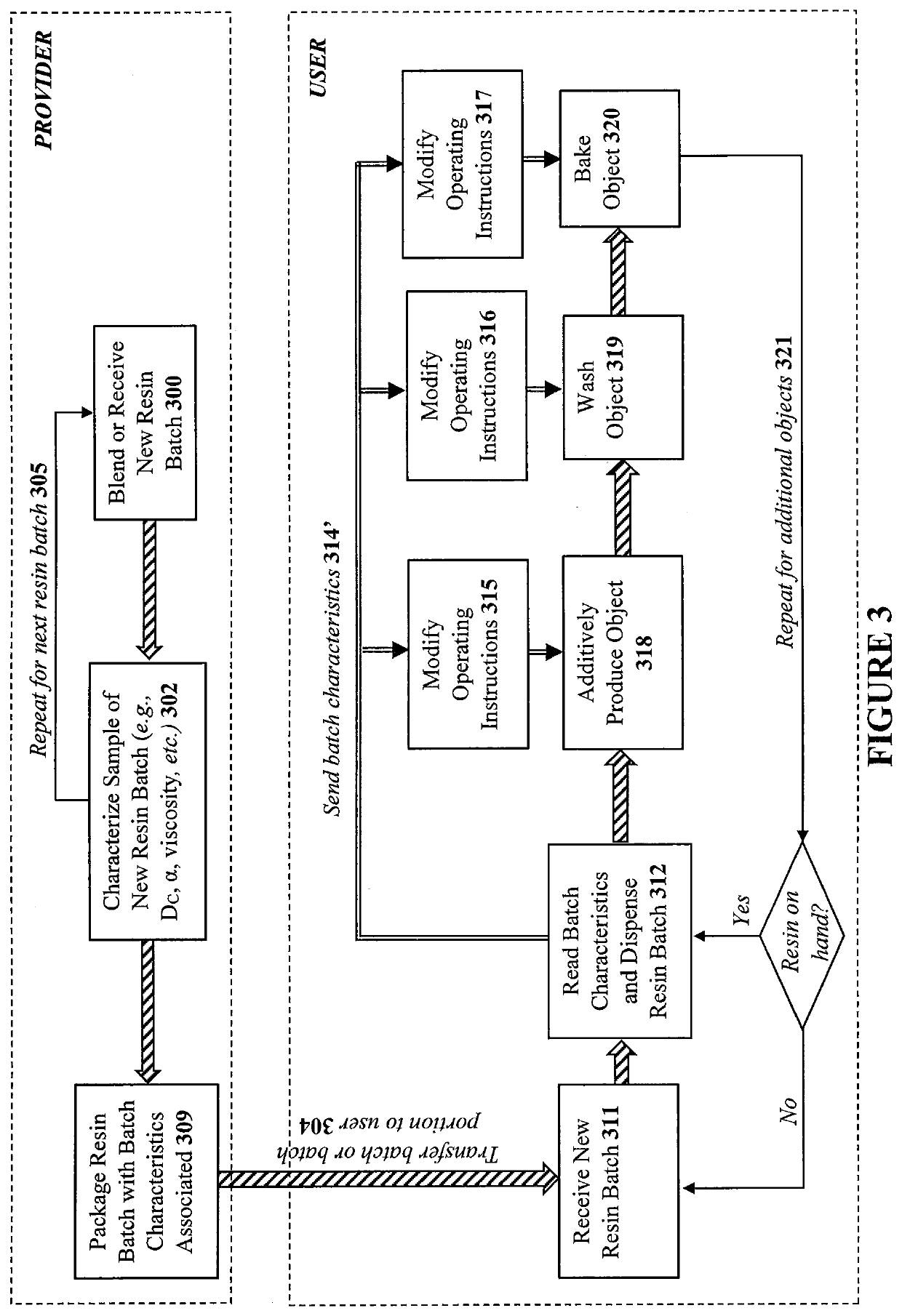Performance Optimization in Additive Manufacturing
a technology of performance optimization and additive manufacturing, applied in the field of additive manufacturing, can solve the problems of reducing affecting the performance of the tuned additive manufacturing process, and affecting the ability of resin and apparatus providers to optimize files and process steps for their end users, so as to improve the speed of object production and reduce the accuracy of object production. , the effect of complicating the optimization of manufacturing performan
- Summary
- Abstract
- Description
- Claims
- Application Information
AI Technical Summary
Benefits of technology
Problems solved by technology
Method used
Image
Examples
Embodiment Construction
[0053]The present invention is now described more fully hereinafter with reference to the accompanying drawings, in which embodiments of the invention are shown. This invention may, however, be embodied in many different forms and should not be construed as limited to the embodiments set forth herein; rather these embodiments are provided so that this disclosure will be thorough and complete and will fully convey the scope of the invention to those skilled in the art.
[0054]As used herein, the term “and / or” includes any and all possible combinations or one or more of the associated listed items, as well as the lack of combinations when interpreted in the alternative (“or”).
[0055]“Cure-through” occurs during production when a local region of the part that is intended to remain uncured, is nonetheless unintentionally cured by light passing through subsequently produced, regions of the part that underlie the region where cure through occurs. Cure through can be offset by delaying exposu...
PUM
| Property | Measurement | Unit |
|---|---|---|
| temperature | aaaaa | aaaaa |
| temperature | aaaaa | aaaaa |
| temperature | aaaaa | aaaaa |
Abstract
Description
Claims
Application Information
 Login to view more
Login to view more - R&D Engineer
- R&D Manager
- IP Professional
- Industry Leading Data Capabilities
- Powerful AI technology
- Patent DNA Extraction
Browse by: Latest US Patents, China's latest patents, Technical Efficacy Thesaurus, Application Domain, Technology Topic.
© 2024 PatSnap. All rights reserved.Legal|Privacy policy|Modern Slavery Act Transparency Statement|Sitemap



